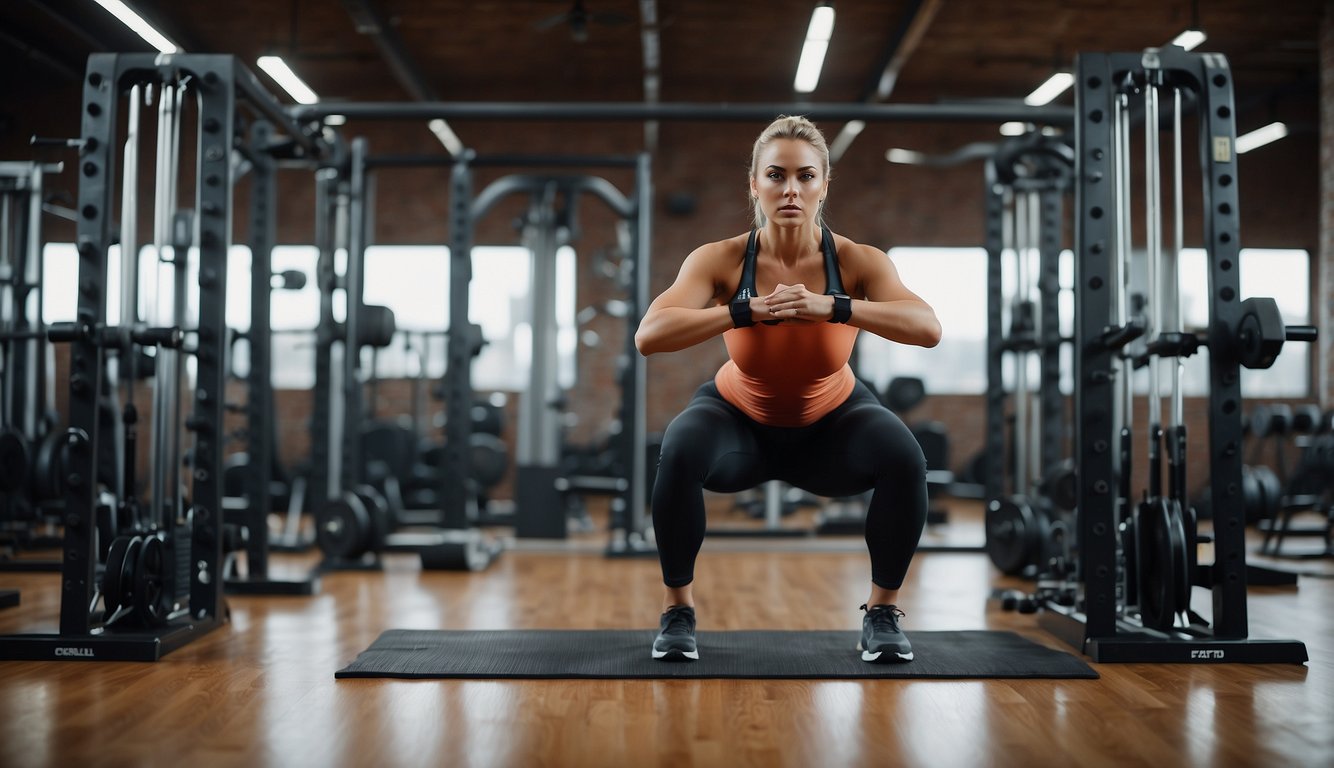888-963-9454
Mon-Sun: 9am-5pm CST
888-963-9454
Mon-Sun: 9am-5pm CST

If you're looking to change your body by gaining muscle and losing fat, choosing the right body composition exercises can make a big difference. Body composition is about how much muscle and fat you have, and to change it, you need a mix of exercise types.
Lifting weights is great for building muscles, and doing things like running can help burn fat. Picking exercises that workout your whole body, especially ones that use lots of muscles at once, is really good for you.
Remember that everyone is different, so pick exercises that fit what you need and can do.
Want to know which exercises can help you get stronger and leaner? Keep reading to find out!
In fitness and health, body composition is a fundamental concept that focuses on the proportions of fat, muscle, and other components in your body. It's critical for designing a well-rounded workout plan.
Body composition consists of two main components:
A balanced body composition has a healthy proportion of fat to lean mass. Excess body fat can be detrimental to health, while sufficient muscle mass contributes to strength and metabolism.
To accurately measure your body composition, you have a variety of tools at your disposal:
Understanding and measuring your body composition is essential for tracking fat loss, maintaining or building muscle groups, and enhancing overall health. It helps tailor your exercise and nutritional strategy to optimize results.
To establish a well-rounded physique, it's critical to focus on exercises that build foundational strength. This section covers key workouts targeting your upper body, core and stability, lower body, and legs, along with cardiovascular and high-intensity exercises for comprehensive development.
Burn more fat by adding whole body vibrating platforms to your routine! Check out collections: Whole Body Vibration Platforms and read more about their benefits here: Vibration Platform Exercises: Enhancing Strength & Stability.
When tailoring body composition exercises to your fitness journey, it's important to consider both adapting exercises to your current fitness level and incorporating various equipment to optimize your workout's intensity and effectiveness.
Your fitness level dictates the starting point for your exercise regimen.
As a beginner, it's crucial to focus on form and consistency before adding complexity to your workouts.
As your strength and confidence grow, integrating equipment can add resistance and enhance muscle adaptation.
Remember that safety should always be your priority. Gradually increasing weight and complexity in your exercises will ensure continual progress and minimize the risk of injury.
When honing your body composition, integrating specialized training techniques can accelerate your progress.
These methods focus on tweaking strength training, incorporating full-body moves, and enhancing mobility to effectively burn fat and build muscle.
Progressive Overload is the gradual increase of stress placed upon the body during training. To apply this:
Training Volume refers to the total amount of work performed, usually calculated as sets x reps x weight. For optimal growth:
Active Recovery aids in maintaining mobility while promoting muscle repair:
Choosing the right mix of exercises like weightlifting and cardio is key to changing your body by turning fat into muscle. It's important to find workouts that push you just enough and to track how you're doing. Since everyone is different, what works for one person might not work for another.
To get a fitter, more toned body, combine exercises like lifting weights and doing cardio. Keep doing these exercises regularly, listen to what your body tells you, and use our tips to help guide you to the body you want.
Body composition is crucial because it gives a more detailed look into your overall health than just weight alone. It measures your fat in relation to your muscle, and knowing these can help tailor your exercise routine. Improving your body composition by reducing fat and increasing muscle can lead to better endurance, strength, and overall health. It also affects how you look and feel, making it a key goal for many fitness programs.
To swiftly improve your body composition, focus on a combination of strength training and high-intensity interval training (HIIT). Lifting weights will increase your muscle mass, and HIIT will aid in burning fat.
Pair these exercises with a protein-rich diet and good hydration, while ensuring you get enough sleep and manage stress. Understand that 'fast' changes are relative and should still be achieved in a healthy manner.
Reducing body fat percentage involves a mix of regular exercise, especially cardio and strength training, alongside a healthy diet low in processed foods and high in lean proteins, whole grains, and vegetables. It's also important to maintain a caloric deficit, where you burn more calories than you consume. Consistency and patience are key, as healthy fat loss should be gradual to ensure it's sustainable.
There are several methods to determine your body composition. One of the simplest ways is to use a scale with bioelectrical impedance analysis, which sends a harmless electrical current through the body to estimate body fat percentage.
Skinfold measurements using calipers or more advanced methods like a DEXA scan can provide more accurate and detailed results. For practical purposes, a professional assessment at a health club or medical facility can also be an option.
The information in the Website is provided “as is” and for general information only. It is not intended as medical advice and should not be relied upon as a substitute for professional consultation with a qualified healthcare provider familiar with your individual medical needs.